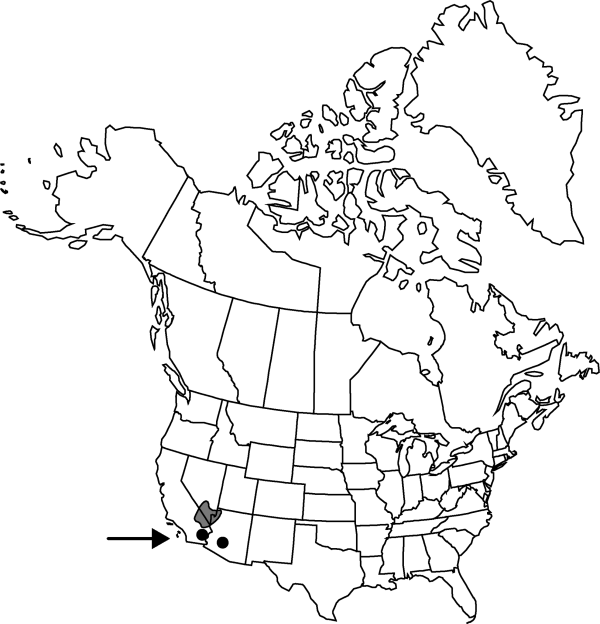Grusonia parishii
J. Arizona-Nevada Acad. Sci. 32: 50. 1999.
Shrubs, forming mats, 10–20 cm in series of usually 1–2 stem segments. Roots diffuse. Stem segments clavate, 5–9 × 2–3 cm; tubercles prominent, 15–25 mm, narrow, 4–6 times longer than wide, obscured by interlacing spines; areoles 5 mm in diam.; wool grayish white. Spines 14–17(–22) per areole, mostly in distal areoles or ± uniformly distributed, white to brownish, tipped yellow; major 5–6 abaxial spines strongly deflexed, flattened, longest white margined, 25–45(–58) mm; central spine brown or white, long tapered; major ca. 5 adaxial spines divergent, blackish or brown to tan, subterete, angular-flattened at base, longest to 42 mm. Glochids adaxial in areoles, yellow, 5–8 mm. Flowers: inner tepals pale yellow with narrow reddish midstripes, 15–22 mm; filaments pinkish or greenish to pale yellow; style whitish to pale yellow or dull pinkish; stigma lobes white, greenish white or pale yellow. Fruits yellow, 35–55 × 15–20 mm, fleshy, spineless, densely yellow glochidiate; areoles 35–52. Seeds yellowish white, 4–4.5 × 3.5–4.5 mm, smooth. 2n = 22.
Phenology: Flowering late spring–early summer (May–Jul).
Habitat: Mojave and Sonoran deserts, silty, sandy, or gravelly flats, dunelets, hills
Elevation: 300-900 m
Distribution

Ariz., Calif., Nev.
Discussion
L. D. Benson (1969) segregated plants of the southern Arizona populations, which are less robust than the others, as “Opuntia stanlyi var. peeblesiana;” unfortunately he included with its type other specimens that belong to Grusonia kunzei. Diploid plants of G. parishii have spineless (but glochidate) fruits; tetraploid plants of G. kunzei have spiny and glochidate fruits.
Selected References
None.